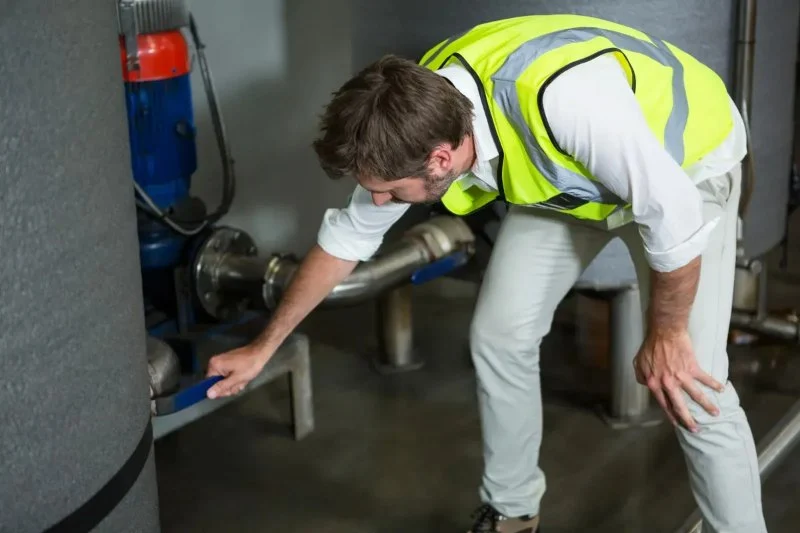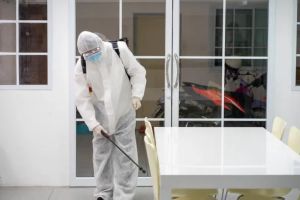
- 1. Why Inspect Around Plumbing Lines for Pests?
- 2. Common Pests Found Around Plumbing Lines
- 3. How to Conduct an Inspection for Pests Around Plumbing Lines
- 4. How to Prevent Pests from Entering Through Plumbing Lines
- 5. Why Choose PestControlHub for Pest Management
1. Why Inspect Around Plumbing Lines for Pests?
When it comes to pest control, we often think of insects and rodents creeping through doors and windows, but plumbing lines are another major entry point for pests. Plumbing lines, which run through the walls, ceilings, and floors of your home, provide easy access for pests such as rodents, cockroaches, and even termites. These pests may find shelter, water, and food sources near plumbing systems, making them an ideal location for an infestation.
Inspecting around plumbing lines is essential for detecting potential problems early before they escalate into a full-blown infestation. This proactive approach can help you avoid costly damage and health risks associated with pests. In this guide, we will walk you through the importance of inspecting around plumbing lines for pests and how to effectively monitor these areas for signs of trouble.
2. Common Pests Found Around Plumbing Lines
Several types of pests are commonly found near plumbing lines, often because these areas provide the necessary moisture and dark, hidden spaces they prefer. Here are some of the most common pests that can invade your home through plumbing:
- Rodents: Mice and rats are notorious for entering homes through plumbing lines. They can gnaw through pipes, wires, and insulation, creating further damage while they nest in the walls and ceilings.
- Cockroaches: Roaches are attracted to areas with access to water, which makes plumbing lines a perfect breeding ground for them. They often travel through pipes and drains to infiltrate your home.
- Termites: Termites are known to feed on wood and can easily gain access to wooden structures around plumbing lines. This can lead to significant structural damage if left unchecked.
- Ants: Certain species of ants, such as carpenter ants, are drawn to the moisture found near plumbing. They can use plumbing lines as pathways to invade your home in search of food and water.
Recognizing the signs of these pests early is key to preventing further damage and health risks. Monitoring plumbing areas regularly can help you stay ahead of any potential problems.

Reliable Pest Control Paterson Crew
PatersonPassaic CountyNew Jersey
154 Lenox Ave, Paterson, NJ 07502, USA
3. How to Conduct an Inspection for Pests Around Plumbing Lines
Conducting an inspection around plumbing lines involves checking both visible and hidden areas where pests may be entering or nesting. Here’s how you can do it effectively:
- Visual Inspection: Start by examining the visible plumbing pipes under sinks, behind toilets, and in utility rooms. Look for any gaps or cracks in the walls, floors, or ceilings around the pipes that could be potential entry points for pests.
- Check for Moisture: Pests are often attracted to moisture, so inspect for any signs of water leaks around plumbing lines. If you notice water stains or dripping pipes, you may have a moisture issue that’s attracting pests.
- Inspect Drainage Areas: Check your drains and sewage pipes for any signs of blockage or leaks. Pests like cockroaches often travel through drains and can enter your home from there.
- Look for Droppings or Nesting Materials: Look for any signs of pest droppings, nest material, or damage around the plumbing area. Rodents may leave small droppings, and cockroaches may leave their characteristic dark smear marks around wet areas.
It’s also a good idea to use a flashlight to inspect areas behind cabinets or under sinks, as these hidden spaces can be ideal hiding spots for pests.
4. How to Prevent Pests from Entering Through Plumbing Lines
Once you’ve identified potential entry points for pests around plumbing lines, it’s crucial to take steps to seal them off and prevent further infestations. Here are some prevention tips:
- Seal Gaps and Cracks: Use caulk or expanding foam to seal any gaps or cracks around plumbing pipes. This will prevent pests from entering through small openings.
- Install Drain Covers: Use drain covers or mesh screens to prevent pests like cockroaches from entering your home through drains.
- Fix Leaks: Repair any leaking pipes or fixtures immediately to eliminate the moisture source that attracts pests.
- Regular Inspections: Regularly inspect your plumbing system for leaks or damage that could create new entry points for pests. Catching issues early helps prevent pest problems from escalating.
Preventing pests from entering through plumbing lines is an ongoing process. Routine maintenance and inspections are key to ensuring that your home remains pest-free.
5. Why Choose PestControlHub for Pest Management
At PestControlHub, we provide expert pest control solutions to help you identify, manage, and prevent pest problems around plumbing lines. Whether you're dealing with rodents, cockroaches, or termites, our comprehensive pest control services ensure that you can address any issues before they become a larger problem. Visit PestControlHub for professional pest control products and services tailored to your needs.








 Wildlife Resolutions4.0 (443 reviews)
Wildlife Resolutions4.0 (443 reviews) Pest Marshals of Toledo5.0 (2 reviews)
Pest Marshals of Toledo5.0 (2 reviews) LS Rodent Proofing & Pest Control Service5.0 (4 reviews)
LS Rodent Proofing & Pest Control Service5.0 (4 reviews) Best Termite & Pest Control4.0 (16 reviews)
Best Termite & Pest Control4.0 (16 reviews) Varment Guard Wildlife Services5.0 (28 reviews)
Varment Guard Wildlife Services5.0 (28 reviews) Pestban Inc4.0 (394 reviews)
Pestban Inc4.0 (394 reviews) How to Use Monitors to Detect Pest Entry: A Comprehensive Guide
How to Use Monitors to Detect Pest Entry: A Comprehensive Guide How to Predict Which Pests Will Invade Next – Smart Pest Forecasting for the U.S.
How to Predict Which Pests Will Invade Next – Smart Pest Forecasting for the U.S. How to Conduct a Pest Risk Assessment at Home – Expert Guide
How to Conduct a Pest Risk Assessment at Home – Expert Guide How to Block Pest Entry Around Deck Joists: Effective Solutions
How to Block Pest Entry Around Deck Joists: Effective Solutions How to Safely Use Fumigation Methods: A Comprehensive Guide for Homeowners
How to Safely Use Fumigation Methods: A Comprehensive Guide for Homeowners Why Pests Are More Active After Rain: Understanding the Link Between Weather and Pest Behavior
Why Pests Are More Active After Rain: Understanding the Link Between Weather and Pest Behavior